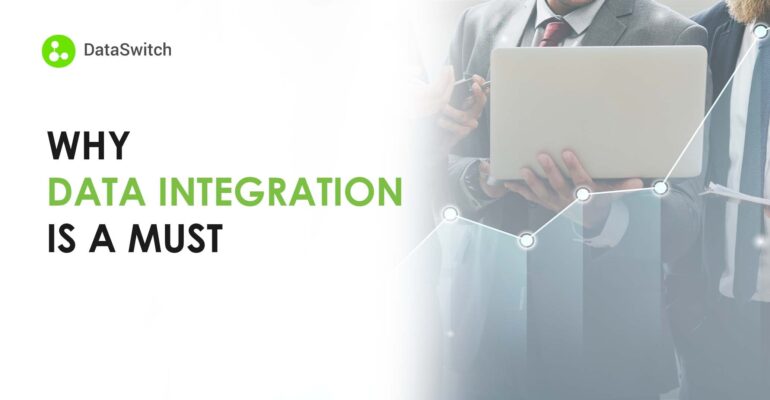Why Data Integration Is A Must

Why Data Integration Is A Must
The hottest word of the past decade, and for the decades to come, in the technological world is “data”. Each of us generates thousands or possibly millions of data points in a single day, just by logging into the internet and searching for a keyword on Google or by clicking on the Like button for a random video on YouTube or Facebook, by scrolling through business pages on Instagram, by purchasing a packet of soup from a supermarket, by leaving feedback on a product, or by calling customer support to lodge a complaint on Zomato. Every second, we leave our imprints in the many digital and physical touchpoints surrounding us.
Now, as an owner of a company/business, it is important to be on top of the data game, with more competitors empowering their decisions using well-supporting data. Being left behind and strategizing operations on older ideologies or manual research won’t do. But with these numerous touchpoints generating terabytes and petabytes of data on a daily basis, imagine how frustrating it must be to generate insights by looking into each of these touchpoint systems individually to try and improve your sales/marketing and therefore your revenue!
Since each system/application houses data in various formats, more than 70% of the time spent will be on cleaning, parsing, and transforming the data into the desired format before getting to analyze what story the data is telling you regarding your customers. This is where it would help to have all data from different systems in a single unified space to be able to consume easily.
Data Integration is this exact process of bringing data together from multiple data sources into a common location. Once all desired data is under one roof, you can run analyses to understand how your target audience is interacting with your business, where frequent complaints arise, which features they enjoy and come back to, which ones don’t generate much interest, which services they request offers on, or any other questions on the business operations that need understanding for improvement. Customers expect businesses to know the history of transactions, even if it’s across diverse platforms and data integration is the best way to achieve that.
With the help of data integration, companies can ensure that all departments within have access to data that is consistent. This makes it easier for teams to communicate with each other on their respective specializations, reduce errors and rework in their view of data and drive data-empowered decisions. With information from multiple sources, analysts can take the call based on their business use cases to determine which has a better quality of data and use it to enrich their own original data.
Data integration needs to be a well-thought procedure that considers the following points about the incoming data:
- The data sources – telephonic conversations, videos, instant messaging/chat, web interactions, physical transactions in stores, machine-generated data, Internet of Things, social media, inhouse CRM and Marketing systems, third party intent data
- The volume of data being ingested
- The frequency at which data needs to be ingested (hourly/daily/weekly/monthly)
- The data format at each source
- The types of data – numerical, videos, audio, complex data structures like maps, lists, arrays, dictionaries
- The location of different data sources – cloud, files, relational databases, reports, sensors, hybrid systems
- How to handle multiple subdivisions of small data
- Data from legacy systems, that may contain undesirable gaps or missing data
Bringing the data together under one hood is not a meager task and it’s important to understand the process behind it and the ROI that it provides. Once the data is extracted from the sources, it needs to undergo a rigorous process of Transformation and Loading, where data is shaped, formatted depending on how it is intended to be consumed for analytical use cases.
Factors such as ease of use, technical efficiency of code, portability – i.e., the ability to adapt to different data sources, automation of data integration to minimize manual intervention, and the flexibility of the destination data warehouse to house all types of the ingested data are critical and must be assessed. It is imperative that the process is frequently monitored to be up to date with best practices and organization regulations.
Data is all-pervasive and of incredible power. Leveraging its true potential starts with identifying the sources and integrating them for utilization in analytical and operational projects. Investing in data integration can save a lot of time and cost that will otherwise be spent on cleaning and transforming data, prior to each analysis by each invested stakeholder team. In turn, this can help devise meaningful and actionable strategies for your businesses to succeed.
Manually tracking checkpoints and overseeing data integration processes can be time-consuming and error-prone. DataSwitch’s DS Integrate can help your data teams automate these processes to leverage your enterprise data to its best potential. Achieve up to 70% faster processing, 100% transactional data extraction, and 90% accuracy with DS Integrate.
Book a no-commitment strategy call with our experts to get started.



